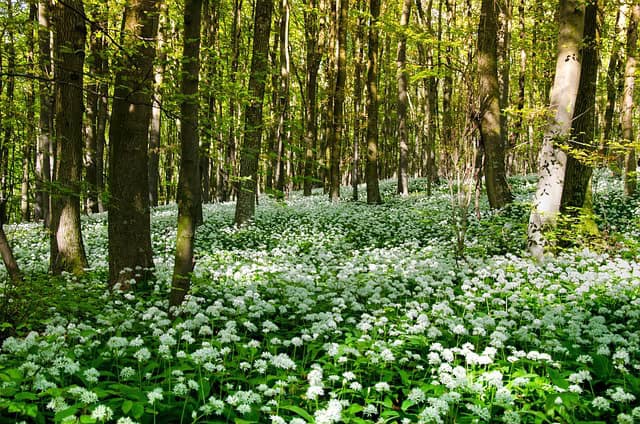Plant Biodiversity: Importance and Conservation are fundamental for the well-being of our planet. Plant biodiversity means the variety of plants living in a certain place, including different species and their unique traits.
Diversity in plants is like having a diverse team where each member brings something special. Now, why does it matter? Think of it this way: plants are like the superheroes of Earth.
They produce the air we breathe, offer food for animals, and even help keep the weather steady. Plant diversity is the key to a balanced and healthy environment.
In this brief exploration, we’ll touch on the basics of plant biodiversity and why taking care of it is essential for the ecosystems that support life on our planet.
What is Plant Biodiversity?
Plant biodiversity, encompassing the variety of plant life in a specific region or habitat, is crucial for the health and resilience of ecosystems.
It encompasses the variety of plant species, their unique genetic characteristics, and the complex relationships they establish within their surroundings. This diversity can be observed at different levels:
Genetic diversity represents the variation within a single species, species diversity involves the number of different plant species in a given area, and ecosystem diversity refers to the variety of ecosystems in a region.
The significance of Plant Biodiversity: Importance and Conservation lies in its role in maintaining the overall health and balance of ecosystems.
Genetic diversity allows plant populations to adapt to changing environmental conditions, species diversity contributes to the stability of ecosystems, and ecosystem diversity ensures a range of ecological services that support life on Earth.
Genetic diversity within plant populations is akin to a library of traits that provide resilience against diseases, pests, and environmental stressors. It acts as a natural insurance policy, ensuring that some individuals within a species are better suited to survive and reproduce in changing conditions.
Species diversity, on the other hand, promotes stability within ecosystems by preventing the dominance of one species and fostering symbiotic relationships among different species. This interconnectedness helps in the efficient functioning of ecosystems, from pollination to nutrient cycling.
Lastly, ecosystem diversity ensures that different types of habitats are present, each with its unique set of plant species, contributing to a variety of ecological services that benefit both the environment and human communities.
Understanding and preserving these components of plant biodiversity is critical for sustaining life on Earth.
The Importance of Plant Biodiversity
Plant Biodiversity: Importance and Conservation play a vital role in supporting life on Earth. Plants, through processes like photosynthesis, produce oxygen essential for the survival of many organisms, including humans.
Additionally, plant biodiversity serves as the primary source of food for various species, forming the base of the food chain. Beyond sustaining life, the intricate relationships within ecosystems highlight the profound impact of plant diversity on ecosystem services.
These services include regulating climate patterns, maintaining soil fertility, and supporting water purification processes. In essence, the diversity of plants contributes to the overall health and functioning of the planet’s ecosystems.
The impact of plant diversity on human well-being is extensive and often overlooked. Many of the foods we consume daily, such as fruits, vegetables, and grains, are derived from diverse plant species.
Each plant contributes unique nutritional elements, fostering a balanced and healthy diet. Medicinal plants, another crucial aspect of plant diversity, provide the foundation for numerous pharmaceuticals, offering treatments for various ailments.
Moreover, diverse plant ecosystems offer recreational spaces, contributing to mental well-being. Understanding and valuing diversity in plants is important for maintaining a sustainable and interconnected relationship between humans and the natural world.
Examples of how diverse plant species contribute to human well-being are abundant. Various fruits, vegetables, and grains provide essential vitamins and minerals, contributing to overall health.
Medicinal plants like aloe vera, chamomile, and eucalyptus offer natural remedies for common ailments. Plant-based products, including timber, fibers, and biofuels, meet numerous human needs.
Additionally, diverse plant ecosystems, such as forests and wetlands, offer recreational spaces, promoting physical and mental health. Recognizing the multifaceted benefits of plants is necessary for fostering a sustainable coexistence between humans and the environment.
Also Read: Understanding Environment and Ecosystem Variances
Threats to Plant Biodiversity
Several major threats pose significant risks to plant biodiversity, including habitat loss, climate change, and invasive species. Habitat loss occurs when natural environments are transformed for human activities such as agriculture, urbanization, or infrastructure development.
This alteration disrupts the balance of ecosystems, leading to the decline of native plant species and the loss of critical habitats. Climate change further exacerbates these challenges by altering temperature and precipitation patterns, affecting the geographic distribution and life cycles of many plant species.
Invasive species, introduced from other regions, can outcompete native plants for resources, disrupt local ecosystems, and contribute to the decline of indigenous flora.
The consequences of declining plant biodiversity are far-reaching, impacting both the environment and human societies.
As plant species disappear, ecosystems become less resilient to environmental changes, increasing the risk of ecosystem collapse. This, in turn, affects the availability of ecosystem services, such as clean water, pollination of crops, and regulation of climate.
Furthermore, the loss of plant diversity undermines global food security, as many crops depend on diverse ecosystems for their resilience against pests and diseases.
Overall, the threats to plant biodiversity have cascading effects on the health of the planet, emphasizing the urgent need for conservation efforts to mitigate these challenges.
Conservation Efforts for Plant Biodiversity
Conservation plays a crucial role in maintaining plant biodiversity, ensuring the continued existence of diverse plant species and the ecosystems they inhabit.
The importance of conservation lies in safeguarding the intricate balance of nature, which is often disrupted by human activities.
By preserving plant biodiversity, we not only protect the plants themselves but also maintain the health and resilience of entire ecosystems.
This is vital for the well-being of various organisms, including humans, as ecosystems provide essential services like clean air, water, and food.
Initiatives to preserve plant diversity occur on both local and global scales, reflecting the collective effort needed to address the challenges posed by habitat loss, climate change, and invasive species.
Locally, community-based conservation projects focus on protecting specific plant species and their habitats. Globally, organizations and governments collaborate to establish protected areas, enact conservation policies, and promote sustainable land use practices.
In India, for example, the National Biodiversity Authority works to conserve and sustainably use the country’s rich biological diversity. Additionally, projects like the Green India Mission aim to increase forest and tree cover, emphasizing the significance of local communities in the conservation process.
Numerous success stories and ongoing projects worldwide demonstrate the positive impact of conservation efforts. The Kaziranga National Park in India stands out as an example of successful conservation, particularly for the Indian one-horned rhinoceros.
Through concerted efforts to combat poaching and habitat destruction, the population of these endangered species has significantly increased.
This showcases the potential for conservation initiatives to reverse the decline of plant and animal species and highlights the importance of continued commitment to preserving our planet’s biodiversity.
Biodiversity Hotspots
Biodiversity hotspots are regions with exceptionally high levels of biodiversity that face significant threats, making them priority areas for conservation. These hotspots are crucial due to their concentration of unique and often endangered plant and animal species.
The significance lies in the fact that even though these areas cover only a small percentage of the Earth’s land, they harbor a disproportionately large portion of the planet’s biodiversity.
Protecting biodiversity hotspots is essential to prevent the loss of numerous species and preserve the intricate web of life that these areas support.
In India, there are several biodiversity hotspots one of them is the Western Ghats. The biodiversity hotspot stands out as a remarkable example. This hotspot spans across the western part of India and the island nation of Sri Lanka.
Known for its rich plant diversity, this region hosts numerous endemic species found nowhere else on Earth. The Western Ghats face threats such as habitat loss due to urbanization and agricultural expansion, emphasizing the need for targeted conservation efforts.
Efforts to safeguard this hotspot include the establishment of protected areas, community-based conservation initiatives, and sustainable land use practices.
Recognizing and prioritizing the conservation of biodiversity hotspots, like the Western Ghats, contribute significantly to global conservation goals.
How Individuals Can Contribute to Plant Biodiversity?
Individuals can play a pivotal role in promoting plant biodiversity within their communities through simple yet effective actions.
Planting a variety of native plants in gardens and green spaces is a practical step that supports local ecosystems. Native plants are adapted to the specific conditions of a region, providing essential food and habitat for local wildlife.
Choosing a diverse range of plants ensures a more resilient and balanced environment.
Moreover, individuals can participate in community gardening projects, where like-minded neighbors come together to cultivate and care for shared green spaces, fostering a sense of collective responsibility for local biodiversity.
Sustainable gardening practices are another way individuals can contribute to plant biodiversity.
This involves minimizing the use of chemical pesticides and fertilizers, which can harm plant and animal life. Instead, opting for organic and natural alternatives helps maintain a healthier and more biodiverse ecosystem.
Furthermore, raising awareness within the community about the importance of plant biodiversity and the role of individual actions is crucial.
This can be achieved through educational initiatives, community workshops, or even by sharing information through social media platforms.
By collectively embracing sustainable practices and fostering awareness, individuals can make meaningful contributions to the preservation of plant biodiversity in their surroundings.
Conclusion
In wrapping up, we’ve explored the vital role of plant biodiversity in maintaining healthy ecosystems.
From its importance in supporting life on Earth to the various threats it faces, understanding and preserving Plant Biodiversity: Importance and Conservation is crucial. As we’ve seen, habitat loss, climate change, and invasive species pose significant challenges, underscoring the need for collective conservation efforts.
Each individual can contribute by planting native species, practicing sustainable gardening, and spreading awareness within their community. Recognizing the interconnectedness of all living things emphasizes our shared responsibility for the planet’s well-being.
Let’s not just acknowledge the importance of plant biodiversity; let’s share this knowledge, participate in local conservation, and support organizations working towards a more biodiverse and sustainable future.






